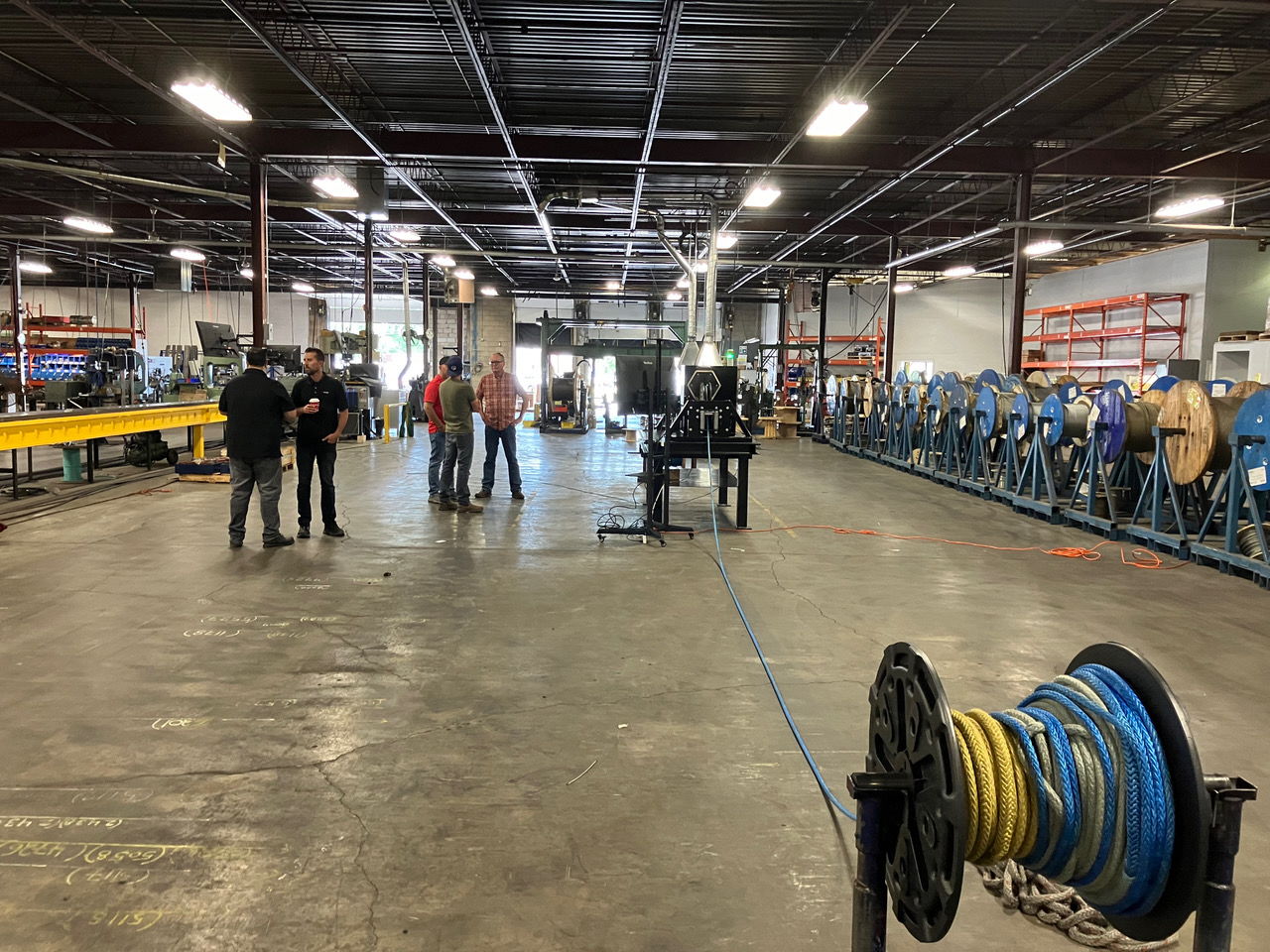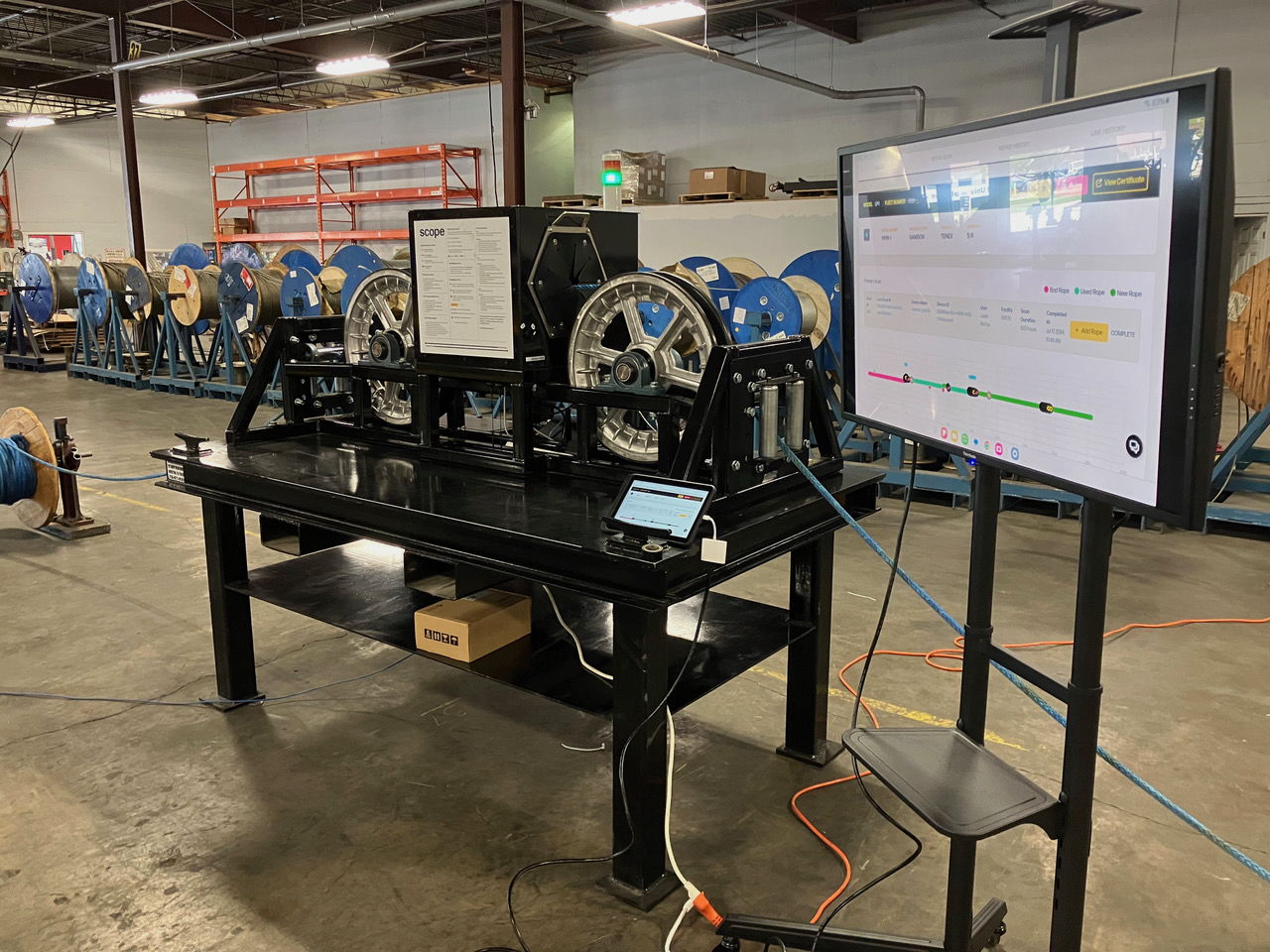Unirope Deploys Scope Utility Stringing Inspection Tech
Ontario-based Unirope Limited has implemented Scope Computer Vision Technologies Corp.’s state-of-the-art utility stringing technology for periodic inspection of pilot and pulling lines.

Mississauga-based Unirope is a specialist in the manufacture, distribution, testing, certification, and inspection of high-performance wire rope and rigging products.
It has additional facilities in Quebec and Alberta; the three sites combine to deliver a service nationwide and to select customers in the U.S. and Europe.
In the utility sector, wire stringing includes all activities associated with the installation of the primary conductors onto the transmission line structures. Central to operations is stringing the pilot line to install the conductor. A lightweight fiber rope (pilot) is flown from tower-to-tower by helicopter, threading the line through rollers. Unirope provides and inspects these pilot lines. Better known as stringing lines, pilot lines can be anywhere in the range of 5,000 to 30,000 feet long.
Unirope has integrated Scope's cutting-edge technology into their inspection processes, revolutionizing how utility stringing lines are maintained. The AI-powered solution augments the human in the loop, providing real-time insights and enhancing the human inspectors' ability to detect potential issues quickly and accurately. This advancement ensures safer operations by identifying potential hazards on the line before they become critical.
Justin Brown, president at Unirope, said: “Our partnership with Scope has allowed us to enhance our inspection processes significantly for our utility, electric utility contractor, and manufacturer customer base. The integration of their technology into our operations has not only improved safety but also increased the efficiency of our inspections.
“It’s incredible that Scope has inspected over 60 million feet of rope to date. We are proud to lead the way in adopting innovative solutions that set new benchmarks in the industry.”
Scope of work
There are four major elements to the system: primary and repair scans; the inspection unit; and a tablet. Rope is spooled in through the Scope device while sensors detect damage and output a projected break strength per segment, and an inspection report is generated — made available to users online. The machine identifies areas of concern and a technician, trained in the inspection and repair of fiber ropes, can decide on remediation.
Brown said: “At up to 5mph, this is much faster than the human eye can perceive during an inspection. At minimum, it is 400% faster, but it’s the accuracy that is most impressive. When a human is looking at a rope, they are not getting a 360-degree view. At best, they can only see the side they are looking at or approximately 33%. A single person inspecting a line can very easily miss damaged sections. Also, that person cannot reliably predict with any certainty the overall condition of the rope.
“This is all about safety. Stringing line failures are costly and a risk to jobsite safety as well as the general public. With this system and our trained technicians, customers finally have a way to know if a line is up to the job, avoiding the expense of unnecessarily replacing good rope and, most importantly, replacing failing rope with confidence before a catastrophic event can occur.”
The successful implementation of Scope's utility stringing inspection technology at Unirope underscores the importance of embracing advanced technologies to improve safety and efficiency in critical operations. Both companies are committed to continuing their collaboration to bring further innovations to the industry.
Mike Poroo, president at Scope, said: “Our technology leverages AI to enhance human capabilities, providing a more thorough and reliable inspection process. This collaboration is a testament to Scope’s commitment to innovation and safety, most notably in the utility sector.”
The machine is trained to specific products and covers an estimated 85% of all stringing lines in service in the U.S. and Canada.


